

11 Tourist-Friendly Native Indian Reservations That Are Open To Value Travelers
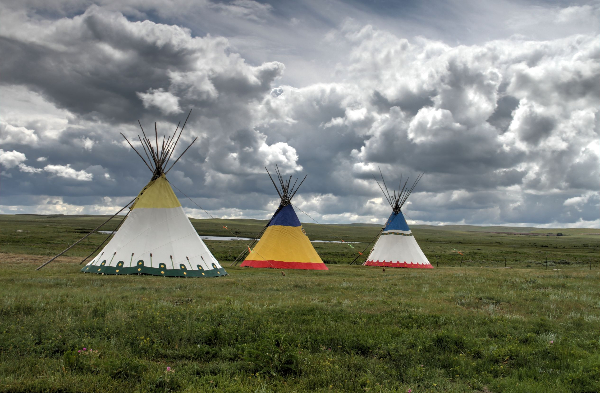
Growing up I remember all the images on TV of heroic American pioneers moving west in covered wagons and being attacked at times by Indians. Never did I give it much thought that the Indians wanted them off their land that they occupied for hundreds of years. We were truly getting one side of the story.
So are they American Indians or Native Americans? Both terms are fine but individuals may have a preference.
There are close to 600 recognized American Indian and Alaska Native tribes and villages. There are over five million Native Americans living in the U.S. which is 2% of the total U.S. population. The largest area of Indian land is the Navajo Nation Reservation in the Southwest going across three states.
30% of the tribes have casino revenues but most continue to face economic hardships. Some tribes prefer not to have tourists, or require that you check in with their tribal office first. Call ahead to the tribal government office to understand if and where visitors are welcome. This way, you can avoid any unexpected common travel mishaps on your journey. When visiting any reservation, you are considered a guest and should respect the privacy of the people who live there and follow the local laws.
Pine Ridge Indian Reservation, South Dakota
Pine Ridge Indian Reservation is the most economically depressed in the U.S. with a relatively short life expectancy for their citizens. These people need your tourist dollars. It is a large area to cover so getting around is easier with a native guide. www.oglalalakotanation.info/home
Tatanka Rez Tourz takes you to the main sites around the reservation. The Wounded Knee Massacre Memorial and the Ogala Lakota College are some of the spots. You will also hear the history of the Lakota, their battles with the U.S. government, broken treaties, starvation, and the eventual Wounded Knee Massacre where U.S. soldiers shot, killed, and mutilated over 300 unarmed men, women, and children. The father/daughter team will meet you in Allen, SD and costs $50 per person/hour. Three hours is recommended. Call for more information 605-455-1744
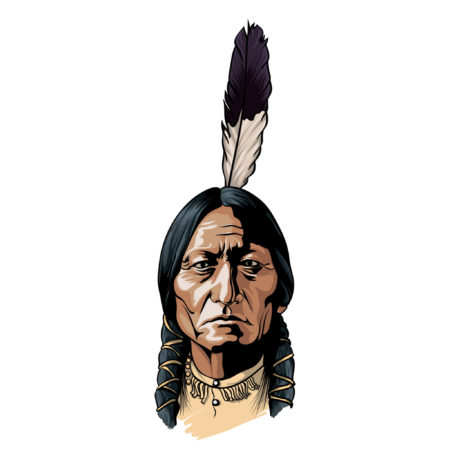
Sitting Bull (Tatanka-Iyotanka) was a Lakota chief in this area and was legendary. After the U.S. Government signed a peace treaty with the tribes in the area in 1868, they reneged on the deal when they found out there was gold in the area just six years later. They wanted the tribes to be relocated out of the area. Sitting Bull, with the assistance of Crazy Horse, went to war in 1876 to ensure they stayed on their native land. They defeated General Custer and the U.S. Army where he had “his last stand”. You can see the Sitting Bull monument off of highway 1806 in Mobridge. www.mobridge.org
At the Mobridge Auditorium go see the 10 murals about the history of the Sioux. Sioux artist Oscar Howe created them in 1941. There is an audio mural tour to describe the murals you are looking at. www.oscarhowetour.wordpress.com
The Blackfeet Reservation, Montana
The Blackfeet Nation has made its ancestral home in Montana including Glacier National Park. Blackfeet Reservation can be visited combined with a tour of Glacier National Park. Sun Tours have guides that are residents of the Blackfeet Indian Reservation who share Tribal culture, history and lifestyle. Half day tours $ 60, full day $ 105 which includes a stop at the Museum of the Plains Indians. www.glaciersuntours.com or call 406-732-9220. To help you see everything on your trip to MT, you should additionally take the time to review our official Montana outdoor travel and adventure guide.

Another option there you have is visiting the Lodgepole Gallery & Tipi Village. Catch a ½ day tour from Blackfeet artist Darrell Norman who discusses history and customs. He will travel with you in your car. $150 1-4 people. You can stay there overnight in a tipi for $ 120 for two people. That includes a sleeping bag and blanket. A traditional Blackfeet dinner is also available for purchase. www.blackfeetculturecamp.com
Every August, Crow Agency becomes the Tepee Capital of the World when it hosts the largest American Indian encampment in the nation, and the largest gathering of the year for the Apsaalooke Nation. It is 60 miles south of Billings, Montana.
To see the many options for Native American sights in this state, go to visitmt.com/guidebook and download the Indian Country guide.
Seminole Indian Reservation, Florida
The Billie Swamp Safari on the Big Cypress Seminole Indian Reservation offers airboat rides. You can also spend the night in a traditional thatch-roof dwelling. At night they also have swamp buggy rides and Native storytelling. Eat at the Swamp Water Café which serves native Seminole delicacies such as catfish, frog legs and gator tail nuggets. While you are in the area, be sure to pay a visit the the Florida Space Coast & Kennedy Space Center.
Every November, the Ah-Tah-Thi-Ki Museum hosts the American Indian Arts Celebration in the Everglades to celebrate the Seminole tribe. There is storytelling, performances, alligator wrestling, and vendors selling traditional arts. You should also visit the museum and the cypress swamp boardwalk. Additionally, the nature trail goes through a cypress dome and ends at a living village. www.ahtahthiki.com
Walker River Paiute Reservation, Nevada
Stop at the Walker River Paiute Reservation in Schurz for hunting or fishing. It was established back in 1874. It is 100 miles south of Reno. For your permit call 775-773-2306. In September head there for the Pinenut Festival which is a great display of native activities. While you are in Schurz, head for some authentic Indian crafts at the Four Seasons Smoke Shop.
At the Churchill County Museum in Fallon you will see the history of the Numu and Newe tribes. www.ccmuseum.org
This is also the meeting spot for a free tour of Hidden Cave nearby. You will learn the history of the Paiute-Shoshone tribes. The tour is held the first and fourth Saturday of each month at 9:30.
Paiute Tribe Reservation, Nevada
On Pyramid Lake in Nixon you can fish or camp overnight on the Paiute Tribe Reservation. It is 35 miles NE of Reno. Tribal permit required. Call 775-476-1155
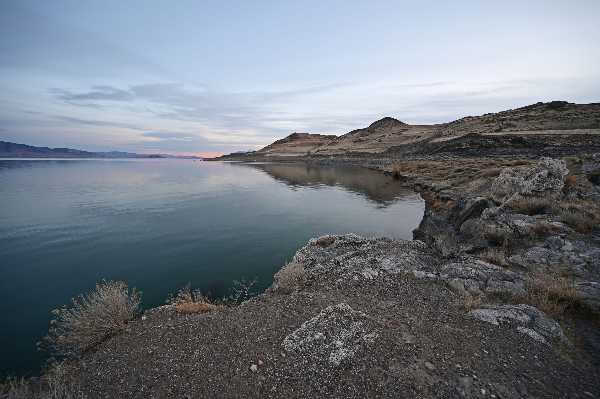
Right over the border in California see the Gatekeepers Museum in Tahoe City. You will learn the history of the Wa She Shu tribe.
Want to see some action? Head to the Las Vegas Strip where you can see the Indian National Finals Rodeo at the South Point Casino. It is usually held in the fall every year. You will see the best from Indian Country during this five day event. Bull riding, bareback bronc riding, calf roping, steer wrestling and more. For more details and dates www.infr.org
Skull Valley Indian Reservation, Utah
Skull Valley Indian Reservation in Utah is home of the Goshute, or Desert People. The reservation is located right between the Great Salt Flats and Salt Lake City. With jawdropping views of Utah’s Salt Flats, Skull Valley is one of the most overlooked North American sightseeing destinations.
If you are looking for somewhere to stay, be sure to check out Simpson Springs Campground, where you can lodge for only $5 per night! Here, you can partake in even more desert activities like four-wheel driving trails, rock hounding, and hiking.
Standing Rock Sioux Reservation, North & South Dakota
Standing Rock Sioux Reservation in North and South Dakota is the fifth largest in the United States, and spans offer two million acres. The reservation is rich with Native American history and natural beauty. Chief Sitting Bull himself, who is known for defeating General Custer, is buried here at Fort Yates. At Fort Yates, you can additionally find the Standing Rock Monument, a natural formation that serves as the reservation’s namesake. There are dozens of additional attractions to visit in Standing Rock Sioux Reservation. For example, be sure to hike the Legacy Trail in order to follow Lewis & Clark’s legendary expedition.
Havasupai Indian Reservation, Arizona
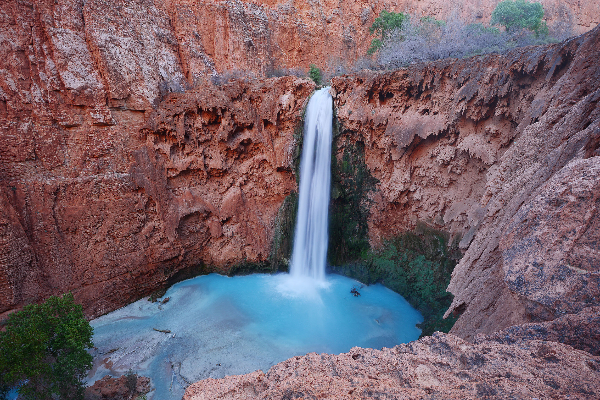
Havasupai is one of the most highly visited Native American Indian Reservations in the United States. Right next to Grand Canyon National Park, Havasupai is unbelievably beautiful. The Indian Reservation is famous for its red rock walls and clear blue waters, which are most prominent at the famous Havasupai Falls. However, the Havasupai land is incredibly sacred to it’s people. Therefore, you will need a reservations with the tribe to hike and camp at the reservation. If you plan on visiting, you can expect to spend around $150 for camping in the area. To prepare for that kind of trip, you should additionally take the time to read our guide on family camping vacations in the United States.
Metlakatla Indian Community, Alaska
Metlakatla Indian Community is located within Alaska’s Annette Islands. It remains as the only Indian Reserve in the State of Alaska. To get to the Metlakatla Community, you will need to take a ferry or short flight from Ketchikan, Alaska. For lodging options, be sure to make a reservation at the Metlakatla Inn or Haven Hotel, as these are the only options for overnight accommodations. For dining, there are only a handful of options to choose from that include, the Metlakatla Mini-Mart, Munchies, Al’s Hungry Raven, Leask’s Market, and the Shadow Mountain Coffee Stand. If you are planning on visiting Metlakatla for longer than 24 hours, you will need to apply for a special visitors permit on their website.
Wind River Indian Reservation, Wyoming
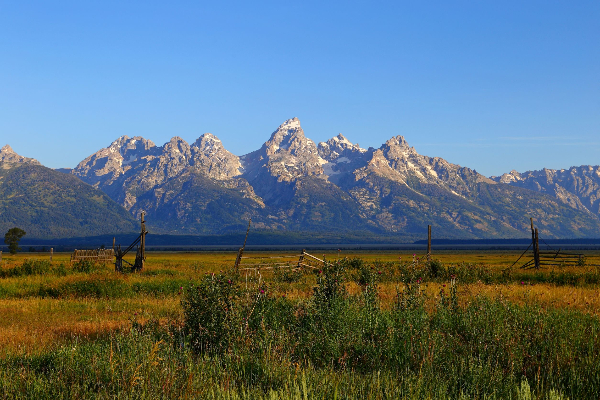
Encompassing more than 2 million acres, Wyoming’s Wind River is the seventh largest Native American reservation in the United States. Many tourists visit Wind River to witness the Absaroka Mountains, Boysen State Park, and Grand Teton National Park. On your visit, you should additionally visit the Eastern Shoshone Tribal Cultural Center, Museum of the American West, and St. Stephens Indian Mission & Heritage Center. If you prefer the outdoors, there are ample opportunities for pack trips, ice climbing, camping, and dog sledding. To see more while you are in WY, be sure to read our complete Wyoming value travel vacation guide to help you best prepare.
Cherokee, North Carolina
Of course, you can always experience an abundance of Native attractions in Cherokee, North Carolina. Located just an hour west of Asheville, NC, Cherokee is conveniently located for visitors all over the East Coast. While you are here, be sure to stop by Oconaluftee Indian Village. Here, modern-day Cherokee will demonstrate how to create arrowheads, carve masks, and build a dugout canoe. Simultaneously, you should stop by the Museum of the Cherokee Indian, where you an learn about important traditions, battle reenactments, and entertainment. Certainly, the Cherokee reservation in North Carolina is an excellent step for your value travel journey.
There are hundreds of pow-wows that you can attend and discover. A pow-wow is an American Indian ceremony or social gathering. There are traditional ones, there are cultural, and there are competitive ones. Those are more intense and involve drum groups and dancers. The songs and dancing are forms of prayers and are a marvel to watch.
Remember every November is Native American Heritage Month. This also raises awareness about our nation’s first inhabitants!
Learn How I Saved Over $15,274 On Booking Flights, Hotels, & Entire Vacations
This expert guide on "Travel Hacking Tactics To Slash Vacation Costs" has personally saved me over $15,274. Within the guide, you will learn how to:

Understand Credit Report Impact On Travel Leverage Travel Hacking Credit Cards Earn Substantial Travel Miles & Points Maximize Credit Card Loyalty Programs
Enter Your Name & Email To Download Your *FREE* Travel Guide
Grasshopper greg, 8 top destinations for native american travel food experiences, how to experience native american tourism and discover indigenous cultures, you may also like, 5 best things to do in the galapagos..., 5 best things to do in denver colorado..., the coolest unique travel destinations for geeks and..., the most essential greek destinations on a european..., most iconic ideas to plan a family vacation..., the best rock and heavy metal music festivals..., the most extreme ziplining vacation destinations for adventure-lovers, the best us cities for music lovers to..., best places to go for veterans day parades,..., kid-friendly ideas for the best family vacations in..., leave a comment cancel reply.
Save my name, email, and website in this browser for the next time I comment.

An official website of the United States government
Here’s how you know
Official websites use .gov A .gov website belongs to an official government organization in the United States.
Secure .gov websites use HTTPS A lock ( Lock A locked padlock ) or https:// means you’ve safely connected to the .gov website. Share sensitive information only on official, secure websites.
Wind River Agency
The Wind River Reservation is located in southwestern Wyoming near Lander, Wyoming. This scenic and mountainous reservation is home to over 3,900 Eastern Shoshone and 8,600 Northern Arapaho enrolled tribal members. The Wind River Agency provides stewardship to more than 1,987,994 surface acres in trust.
The Agency provides direct services in the following program areas: Executive Direction & Administration, Facilities Management, Agriculture, Forestry, Trust Services, Probate, Irrigation and Real Estate Services.
The Tribe has contracted the following programs: Job Placement & Training, Johnson O’Malley, Scholarships, Tribal Adult Education, Indian Child Welfare, Housing Improvement, Tribal Courts, Water Resources, Tribal Management & Development, Endangered Species, and Wildlife & Parks.
Superintendent: Leslie Shakespeare
Deputy Superintendent: Trish Perry
Email: [email protected]
Telephone: (307) 332-7810
Fax: (307) 332-4578

indianaffairs.gov
An official website of the U.S. Department of the Interior

An Introduction to the Wind River Indian Reservation of Wyoming
Introduction.
Like many western states, Wyoming has an Indian reservation within its borders. The Wind River Indian Reservation contains over 2.2 million acres located in the central part of the state. It is home for the Eastern Shoshone and Northern Arapaho tribes. While the Arapahos have more members (over 9,000+ compared to the Shoshones’ 4000+ members), the reservation was created for the Eastern Shoshones (and Bannocks) in 1868. This short article answers three commonly asked questions about the reservation: (1) Who are the Eastern Shoshone and Northern Arapaho Indians? (2) If the reservation was set aside for the Shoshones, when did the Arapahos arrive and why are they there? (3) How does a reservation function?
Shoshone Prehistory
Shoshones have been in what is now Wyoming for a very long time. They originated in the southern Great Basin (now the southern part of Nevada) and spread northward in a fan-shaped pattern. They speak a language (Numic) that is part of the Uto-Aztecan group. The experts–anthropologists, archaeologists, and linguists—argue about the history of the Numic spread, but Shoshones have lived in western Wyoming and the Wind River Mountains for at least 3500 years perhaps even 8,000 years ago.
Shoshone peoples inhabited Utah, Nevada, Idaho, and Wyoming and called themselves Nuwe , or the People. They also refer to themselves by other names, which often translate into English as food groups. The best known of these group names are Salmon Eaters, Buffalo Eaters, and Sheepeaters. But these divisions were never definitive because Shoshones themselves often moved from one resource area to another. The Eastern Shoshones emerged from several of these groups with the acquisition of horses between 1680 and 1720.
Shoshone History, 1700-1780
Eastern Shoshones coalesced from people who lived in the upper Snake River basin of Idaho, along the Green and Bear rivers in Wyoming and Utah, and in the Salmon River country of northern Idaho, all of whom owned horses. From 1700 to 1780, they were active buffalo hunters and feared warriors, traveling into Montana, parts of southern Alberta, and throughout Wyoming. But at the same time, they still maintained strong ties to their homelands along the Green, Bear, Snake, and Salmon rivers.
Shoshone History, 1780-1850
The Shoshone expansion into Montana and Canada lasted only two generations. By the 1760s, enemy Plains tribes also were mounted and fiercely resisted further Shoshone advances. Moreover, they acquired guns—weapons that Shoshone did not have. Then deadly smallpox epidemics in the 1780s, combined with attacks by their foes, forced Shoshones to retreat west of the Rocky Mountains to their Idaho and western Wyoming homelands. From 1790 onward, Shoshones ventured into the buffalo hunting ranges only when they could do so with large groups. Thus, the Salmon River Shoshones (Lemhi Shoshones) joined Flathead Salish Indians from Montana’s Bitterroot Valley to travel to the Missouri headwaters to hunt in the spring and fall. They were sometimes bolstered by Shoshone and Bannock Indians from the Snake River (Fort Hall). At other times, Shoshones from the Green and Bear rivers in Wyoming (Eastern Shoshones) also hunted with the Flatheads and Lemhi Shoshones. Finally, Shoshone-Bannock bands Idaho frequently joined Eastern Shoshones to hunt in the Big Horn or Powder River basins in Wyoming.
Lewis and Clark’s Corp of Discovery marked the beginning of a new era in Shoshone history when they traded met Cameahwaite’s Lemhi Shoshones in 1805. A few years later, mountain men trapped beaver in Wyoming’s streams. The fur trappers allied themselves with the Shoshones and by the mid-1820s, Shoshones regularly participated in the fur trade. All of the Fur Trade Rendezvous, from 1825-1840, were held in Eastern Shoshone country.
Beginning the 1840s, emigrants headed to Oregon traveled through the Shoshone landscape. Then the discovery of gold in 1848 sparked a veritable horde of travelers heading to California. Mormons also moved to Shoshone lands. They first claimed the Salt Lake region, then founded farms and towns in northern Utah and spread into Wyoming and Idaho. This influx of whites into Shoshone country sparked further changes in Shoshone lives.
Washakie and the Eastern Shoshones
Washakie is the best known Eastern Shoshone leader and his personal history demonstrates the fluid nature of Eastern Shoshone origins. He was born to a Lemhi mother and Flathead father. His father was killed by Blackfeet Indians during a Montana buffalo hunt. He was rescued from the battle by Bannocks and grew up among them. During his teen years he joined a Shoshone band that claimed the Green and Sweetwater rivers as their main homelands. This band alternated winter camps near Pinedale or east of the mountains in the Wind River Valley. During the 1820s, he met the famous trapper, Jim Bridger, and became fast friends. (In fact, Bridger married Washakie’s daughter—Mary—in 1850).
Washakie was a noted young warrior in 1840 and rose to prominence in 1851. That year, Bridger persuaded Washakie to go to the first Treaty of Fort Laramie. Washakie led 200 people to the treaty grounds and thereafter, government officials and other white leaders considered Washakie to be the head chief of the Eastern Shoshones. He assumed this role very well: Throughout the 1850s and into the 1860s, Washakie was invited to the vast majority of councils with Mormon and U.S. government officials that concerned Shoshone affairs.
Creating a Reservation, 1850-1868
Wind River became a more important resource and base area for the Eastern Shoshones during the 1850s, in part because the lower Green River and the Bear River region became too populated with whites. But at the same time, Shoshones competed and fought with Crows, Sioux, and Arapahos for the resources of Wind River. Shoshone winter camps therefore alternated between the upper Green River area around Pinedale and the Wind River area, depending on danger.
At the same time, conflict between emigrants, settlers and Shoshones in Idaho and Utah broke out (a few of Washakie’s followers may have been involved), culminating with the infamous slaughter of Shoshones in the winter of 1863 at Bear River. The fighting prompted a peace treaty. Chief Washakie signed the 1863 Treaty of Fort Bridger to try to enlist the aid of the U.S. in securing and defending a homeland. This treaty defined Shoshone country as lands to the west of the Wind River Mountains (it did not include the Wind River Valley). Five years later, circumstances changed. In 1868 the Crows relinquished their claims to Wind River and in the 2nd Treaty of Fort Laramie (1868) the Arapahos were denied a reservation in Wyoming. When Washakie signed the 1868 Treaty of Fort Bridger, he successfully claimed the Wind River Reservation for the Eastern Shoshones.
Arapaho History, 1600-1878
The Arapahos are comparative newcomers to Wyoming. Ancestral Arapahos farmed in Manitoba and Minnesota, then migrated to the Great Plains in the 1600s. By the early 1700s Arapahos were in Montana, Wyoming, and South Dakota. They acquired horses in the 1700s, adopted the Plains Indian horse-and-buffalo hunting culture, and expanded further south and west.
About 1811 Arapahos allied with Cheyennes and the two groups often traveled and hunted together in the central Great Plains. Further alliances with Lakota, Dakota, Kiowa, and Comanche peoples helped the Arapaho establish a solid resource base by the 1840s that included southern Montana, most of Wyoming east of the Wind River Mountains, the Nebraska panhandle, central and eastern Colorado, and parts of western Oklahoma and Kansas. During this time, the Arapahos gradually split into northern and southern divisions.
Generally, Arapaho contact with white people remained peaceful. They actively participated in the fur trade . Their enemies were other Indians. From the northwest to the southwest, the Arapahos fought with Blackfeet, Crows, Shoshones, and Utes. But not all contact with these tribes resulted in battles. For example, Friday, one of the Northern Arapaho leaders, became friends with Washakie during fur trade rendezvous. This friendship played a pivotal role in the Arapahos’ eventual move to Wind River.
Arapahos signed the 1851 Treaty of Fort Laramie, but U.S. officials ignored Arapaho claims to Powder River and set their as south of the North Platte in Wyoming and north of the Arkansas River in Colorado. The Powder River basin was delegated that to various Sioux bands. Yet for the most part, the peace established by the treaty between and among whites and Indians remained intact until 1864.
The Colorado Gold Rush of 1858 challenged Arapaho existence. Gold-seekers split heart of Arapaho and Cheyenne resource areas. This pressured buffalo herds, depleted grass and forage for horses, and deforested trees in the river bottoms that provided shelter and fuel during the harsh winters on the Plains. Minor conflicts broke out, but most Arapahos maintained the 1851 peace. In 1864, however, a peaceful camp of a mixed group of Cheyenne and Arapaho people were attacked and killed by Denver volunteers in the notorious Sand Creek Massacre. The Indians fought back over the next two years.
Seeking refuge and escape from conflict, Northern Arapahos and Cheyennes moved to the remote Powder River basin. But even there, gold seekers traveling the Bozeman Trail to Montana brought more clashes. Arapahos joined forces with Red Cloud’s Oglala Sioux bands and attacked army forts along the Bozeman Trail. The fighting ended with another treaty, the second Treaty of Fort Laramie, signed in 1868. The Arapahos argued in vain to get a reservation set aside for them in the Powder River country in Wyoming. Instead, the treaty specified three disappointing options. They could join their Southern Arapaho relatives in Oklahoma. Or, they could join the Crows in Montana. The third choice was going to a Sioux agency in South Dakota.
But Arapahos still hoped for Wyoming home. In February1870, Arapaho leaders, including Friday, reached a tentative agreement with Washakie to move to Wind River. But a Sioux Indian attack on a South Pass area mining camp got blamed on the Arapahos. In early April, a combined force of Shoshones and U.S. soldiers from Camp Brown (later named Fort Washakie), retaliated against an Arapaho camp. Tensions remained high between the two tribes.
Still, Arapahos did not go to their treaty-designated reservations. Instead, most stayed in the Powder River region, or traveled with Northern Cheyennes and Lakotas into the Tongue River or Yellowstone areas. Others clustered around Fort Laramie. Still others joined Red Cloud’s Oglala Lakotas at their agency on the Wyoming/Nebraska border. One band, camped on the eastern edge of the Big Horn Mountains in 1874, was attacked by Shoshones and soldiers in what has become known as Bate’s Battle.
While at Red Cloud Agency, Arapaho chiefs, most notably Black Coal, Sharp Nose, White Horse, and Friday continually pressed U.S. army officers and officials for permission to move to Wyoming. They finally succeeded in late 1877, and with Washakie’s and other Shoshone headmen’s approval, moved to Wind River Reservation early in the winter of 1878.
Reservation Politics, 1878-1900
Arapaho chiefs and headmen tried to demonstrate that were “good” Indians and an asset to the reservation community. They joined the Indian police force and cooperated with the government. Further, reservation officials invited Arapahos to participate in councils when Indian input was called for in the administration of reservation affairs. Expediency, rather than strict legality, prompted such actions. Technically, Arapahos were temporary residents, not the legal occupants of reservation lands.
The General Allotment Act of 1887 also was applied illegally on Wind River Reservation. This act, also known as the Dawes Act, called for Indian heads of households to claim individual parcels of land (allotments) on the reservation in an attempt to break up “tribalism” and land held in common by tribes. Arapahos as well as Shoshones took up allotments. However, most of the allotments were re-assigned in the 20th century because of questionable practices made by the allotting agent during the 1890s.
The purpose of allotting Indians individual parcels of land was to open up the remaining reservation lands to white homesteading and settlement. In the 1890s local farmers and ranchers called for land cessions from Wind River to open “unoccupied” acreage to homesteaders. Again, reservation agents and government officials illegally included Arapahos in these negotiations. There were two failed land cession councils in 1891 and 1893, but in 1896, the Indians ceded a 10-square mile area in the northeast corner of the reservation around a popular hot springs. This led to the founding of Thermopolis. Washakie always headed the Shoshone councils, while first Black Coal (1840-1893), then Sharp Nose (d. 1901), Lone Bear (1854-1920), and Yellow Calf (1860-1938) served as the Arapaho voices. It should be noted that the councils gave their decisions only after discussing matters with their respective tribes.
Wind River Reservation, 1900-1920s
Following the death of Chief Washakie in 1900, Wind River Reservation superintendents followed the basic practice of calling joint tribal councils together to make decisions about distributions of rations, land cession agreements, leases, and other business practices. The most important one was the McLaughlin Agreement of 1905, which split the reservation in half. Once more, Arapahos illegally participated in the cession councils, which took place in 1904. The cession agreement also required votes of the eligible males of both tribes. For both tribes, only a minority of eligible males actually voted for the agreement (for Indians, not voting meant the same thing as a no vote).
The Mclaughlin Agreement allowed an influx of settlers to establish the town of Riverton and take up homesteads near railroad line being built by the Chicago and Northwestern Railroad. Over the next three decades, irrigation projects gradually allowed a small number of non-tribal farmers to own land and gain a livelihood within the boundaries of the reservation. Both Shoshone and Arapahos received little benefits from these projects.
By the 1920s, federal policies aimed at detribalization resulted in more formal tribal councils with elected members. At Wind River, the Bureau of Indian Affairs superintendents inaugurated a joint business council, with six members elected from each both tribes. The superintendents tried to persuade Shoshone and Arapahos to delegate more authority and decision-making power to the business council, but both tribes resisted. Instead, they preferred to retain as much autonomy as possible within each tribes’ General Council.
Wind River Reservation, 1927-1940
In 1927, a change in federal law allowed the Shoshones to sue the United States for the damages incurred and their loss of one-half of the reservation due to the Arapahos’ presence. In 1937, the U.S. Supreme Court ruled in the Shoshones’ favor and the tribe received over $6 million compensation. But the Supreme Court decision also made clear that the Northern Arapahos were considered equal partners with the Eastern Shoshone to the Wind River Reservation.
Shoshones, and also the Arapahos, firmly resisted other changes to tribal governance in the 1930s. In 1934, Congress passed the Indian Reorganization Act as well as other measures intended to give tribes more autonomy. Other acts reversed federal policy that previously outlawed many traditional native practices. The 1934 IRA called for tribes to reorganize their governance. This including writing formal constitutions and endowing elected business council to make tribal decisions. Neither Wind River tribe adopted the IRA. Political sovereignty to the present day still resides in the General Councils of both tribes.
One other major change occurred to the reservation in 1940. That year, the unclaimed lands that had been ceded in the 1905 McLaughlin agreement were restored to the tribal land base. Thus, Wind River Reservation geography in the modern era basically encompasses the same area as existed in 1872. (In 1872 the Bruno Agreement ceded about one-third of the 1868 treaty lands from the southern portion of the reservation). The city of Riverton lies wholly within the reservation as do the white owned farms in Pavilion, Kinnear, and the Midvale Irrigation District.
Wind River Reservation, 1940 to the present
The Eastern Wyoming and Northern Arapaho tribes have separate governments organized under the auspices of the General Councils of each tribe. The administrative arm of each tribe is the tribal business council (the SBC and NABC). General Council members are all enrolled tribal members who are 18 years old or older. The General Council retains sovereignty for each tribe, but delegates many decisions for day-to-day activities to their respective business councils. Business Council members are elected to fixed terms of office. Each tribe has separate departments, such as housing, employment, social services, and the like. Until late 2014, the Joint Business Council (JBC) operated to attend to reservation matters that affected both tribes. Since then, however, the Arapahos have disavowed the JBC and use joint committees or memorandums of understanding to conduct joint business. Tribal revenues come from oil or gas leases, agricultural leases, casinos, hunting and fishing licenses sold to non-tribal members, cattle ranches, and other business enterprises.
Cultural traditions and ceremonies once banned by the government are now celebrated and encouraged These include rituals such as the sweat lodge, Sun Dance, Ghost Dance, and the Native American Church. Beadworking, powwow dancing, and other traditional practices continue to thrive to the delight of tribal members and non-tribal visitors alike. Both tribes are attempting to preserve their native language.
While older traditions and customs are preserved, practiced, and celebrated, Eastern Shoshone and Northern Arapahos also participate in the larger American consumer world. Cell phones are carried in ornately beaded bags—or simply stuffed into jeans pockets. Ranching and farmwork provide employment both on and off the reservation. Others own construction businesses. Many are college educated with professional careers. Like Americans everywhere, Shoshones and Arapahos own homes, rent houses or apartments, and drive trucks and cars. Many still own and ride horses. Thus, “walking in two worlds”—living with respect for elders and traditions of the past go hand-in-hand with living lives of modernity.
Glossary (PDF)
Indigenous People in Wyoming and the West
In March 2017 the Wyoming Legislature passed and Gov. Matt Mead signed a new law directing our public schools to offer more about the history and culture of the Eastern Shoshone, Northern Arapaho and other tribes of the region. With the help of scholars, tribal elders and educators on the Wind River Reservation, we began adding to our content about American Indians, and educators on the reservation have begun helping us develop classroom materials to accompany these articles. For a selection of the articles, click on the links below. For more information on the classroom materials—digital toolkits of Wyoming history, we call them—visit our Education page. These efforts are possible with generous support from the Wyoming Humanities Council, the Wyoming Cultural Trust Fund, the Ellbogen Family Foundation, a steadily growing list of Wyoming school districts—and the tribal members who consulted on the content. Special thanks to all.

Before Wyoming: American Indian Geography and Trails
Wyoming’s trails, roads and highways follow centuries-old Native American hunting and trade routes. For generations, Shoshone, Arapaho, Cheyenne, Ute, Lakota and Crow people gathered plants, visited family and tracked game along watercourses and over mountain passes in the seasonal subsistence patterns of their lives.
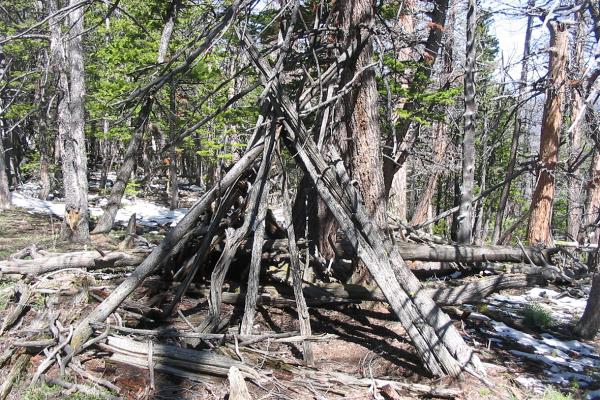
The Mountain Shoshone
The Mountain Shoshone, sometimes called Sheepeaters, lived at high elevations in what’s now northwestern Wyoming from prehistoric times down through the mid-1800s. Recent archaeological discoveries shed increasing light on the lives of these peoples, ancestors of some of today’s Eastern Shoshone.

Medicine Wheel/Medicine Mountain: Celebrated and Controversial Landmark
The Bighorn Medicine Wheel and its surrounding landscapes on Medicine Mountain in the northern Bighorns make up one of the most important Native American sacred sites in the United States. Twenty years of compromise and conflict on how best to preserve the site involved several governmental agencies and elders representing 16 tribes.
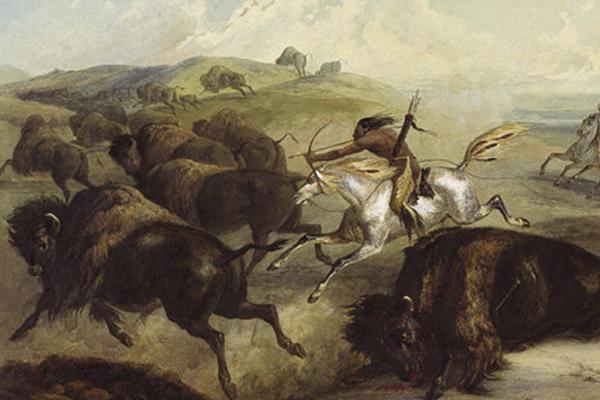
Trade Among Tribes: Commerce on the Plains before Europeans Arrived
Before any contact with Europeans, Shoshone, Crow, Arapaho, Comanche, Cheyenne, Ute and Lakota people in what’s now Wyoming bartered with each other and more distant tribes for food, horses, guns and more in trade networks stretching from the upper Missouri to the Pacific and from Mexico to Canada.
Treaties and Trade-offs
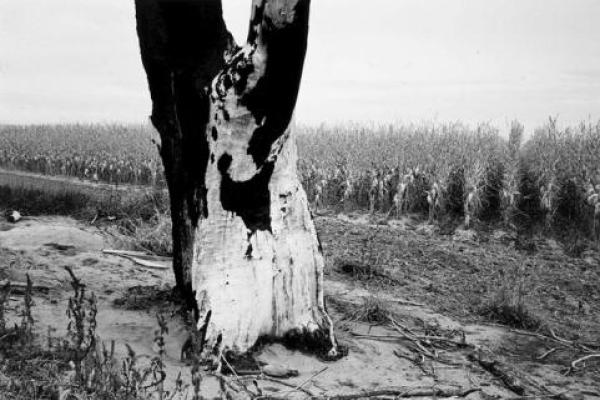
Separate Lands for Separate Tribes: The Horse Creek Treaty of 1851
In 1850, the U.S. Congress authorized a conference to persuade Plains Indian tribes to live and hunt within newly designated, separate territories, and to accept payment for the damage caused by emigrants crossing their lands. The conference in September 1851 drew 10,000 Indians to the confluence of Horse Creek and the North Platte River, 30 miles east of Fort Laramie. The treaty that was signed there, the Horse Creek Treaty of 1851, permanently changed the terms of Indian-white relations on the northern Great Plains.
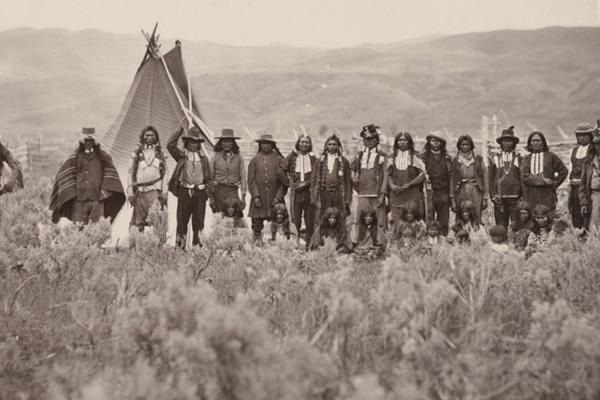
Coming to Wind River: The Eastern Shoshone Treaties of 1863 and 1868
In the 1860s, the Eastern Shoshone people signed two treaties with the U.S. government. The first set aside vast holdings for them. Just five years later, as the transcontinental railroad was approaching, a second treaty established a Shoshone reservation in the Wind River valley—with less than a tenth the earlier amount of land.
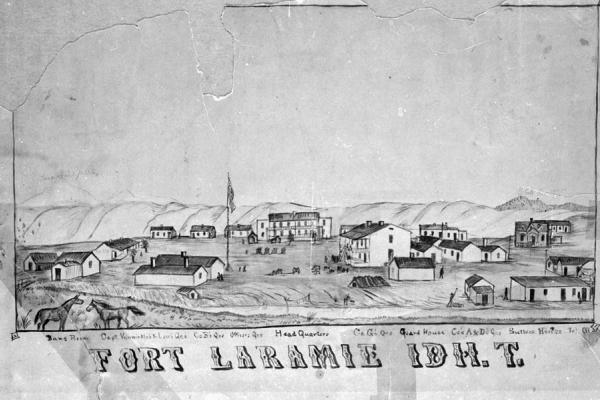
Peace, War, Land and a Funeral: The Fort Laramie Treaty of 1868
In March 1866, when whites and Indians together at Fort Laramie mourned the death of Mni Akuwin, daughter of Spotted Tail, chief of the Brulé Lakota, a colonel at the post hoped it was a sign of peace between the peoples. Peace hopes were shattered later that spring however, by the arrival of hundreds of troops to build forts on the Bozeman Trail, and two more years of bitter warfare followed. Finally in 1868, the tribes of the northern plains gathered at the fort and signed a treaty, ending the war—for a while.
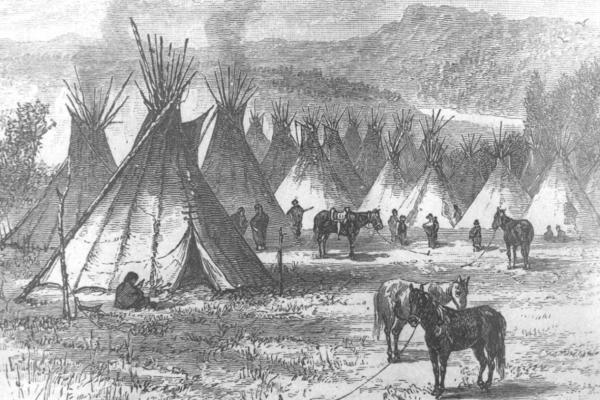
The Arapaho Arrive: Two Nations on One Reservation
In the spring of 1878, about 950 Northern Arapaho people arrived with a military escort on the Eastern Shoshone Reservation in the Wind River Valley in central Wyoming Territory. The two tribes had been in open warfare as recently as four years before, and bad feelings lingered between them.
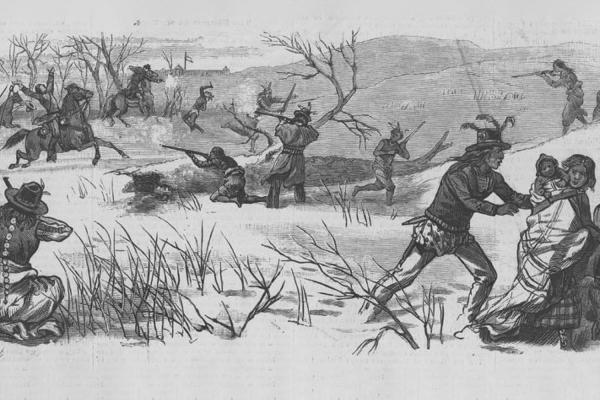
The Cheyenne Homecoming
In a saga of bitter hardship and resolve, 350 Northern Cheyenne led by Little Wolf and Dull Knife escaped the Darlington Agency in present Oklahoma late in 1878. Struggling north, they were imprisoned in Nebraska, broke out and, crossing a corner of Wyoming Territory, finally returned to their Montana homelands.
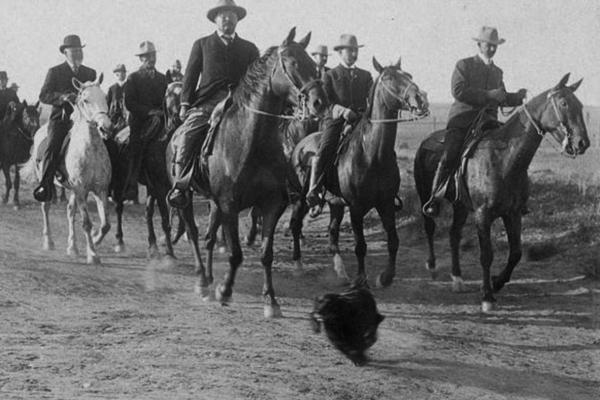
Fragmenting Tribal Lands: The Dawes Act of 1887
Congress in 1887 passed the Dawes Act, setting up a framework for dividing up tribal lands on reservations into plots to be held by individual Indian owners, after which they could be leased or sold to anyone. Critics saw it as a method clearly intended to transfer lands out of Indian hands.
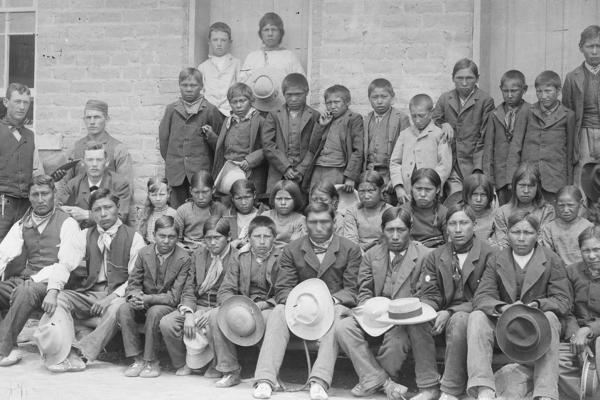
From Wind River to Carlisle: Indian Boarding Schools in Wyoming and the Nation
A century ago there were hundreds of boarding schools for American Indian children. Many were on reservations, and many were run by religious orders; there were three on what’s now the Wind River Reservation in Wyoming. Others were intentionally built far from tribal homelands, to separate children from their languages, lands and families.
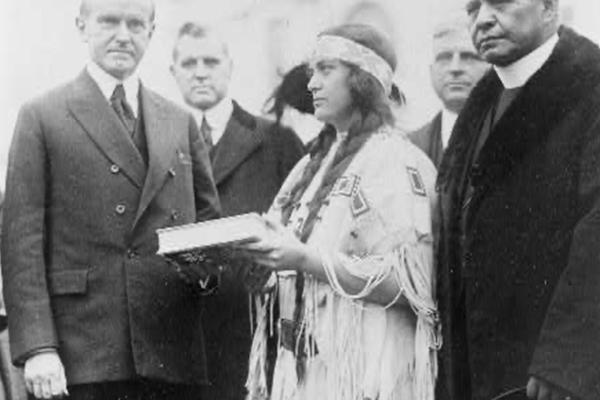
Sherman Coolidge: Arapaho Priest in a Changing World
Sherman Coolidge, a Northern Arapaho adopted and educated by whites, served 26 years as an Episcopal priest on the reservation on Wind River. During that time, he largely allied himself with government over tribal interests. But later, active in the pan-Indian movement, he came to value preservation of Indian cultures over assimilation.
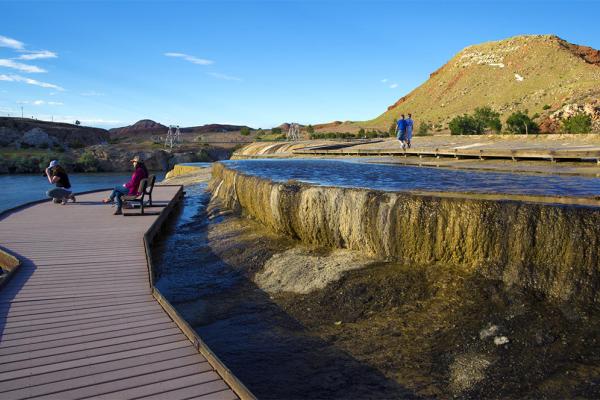
When the Tribes Sold the Hot Springs
With the buffalo gone and poverty, hunger and disease increasing, the Eastern Shoshone and Northern Arapaho tribes came under intense pressure in the 1890s to sell their land. In 1896, they sold the U.S. government a piece of their reservation ten miles square—including the splendid hot springs at present Thermopolis, Wyo.
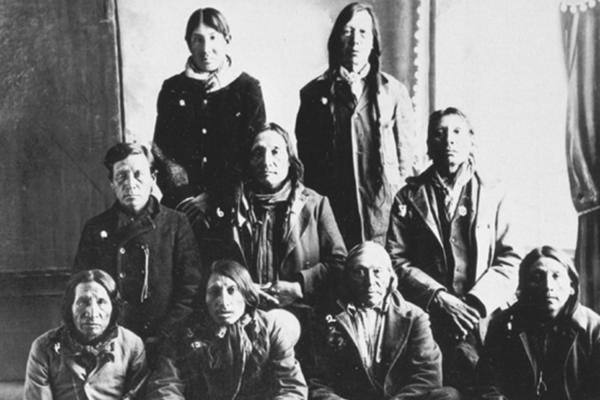

Trouble at Lightning Creek: “A Stained Page in Wyoming’s History”
Just before sunset, on Oct. 31, 1903, a sheriff’s posse and a band of Oglala Sioux families from the Pine Ridge Reservation engaged in a brief, sharp gunfight near Lightning Creek, northeast of Douglas, Wyo. Seven people died, and a U.S. Senate investigation followed.

The Tribes Sell Off More Land: The 1905 Agreement
In 1905, Congress ratified an agreement with the Eastern Shoshone and Northern Arapaho by which the tribes ceded 1.5 million acres of reservation land north of the Big Wind River. Tribal leaders questioned the final terms, however, and payments were slow in coming and fell far short of promised levels.
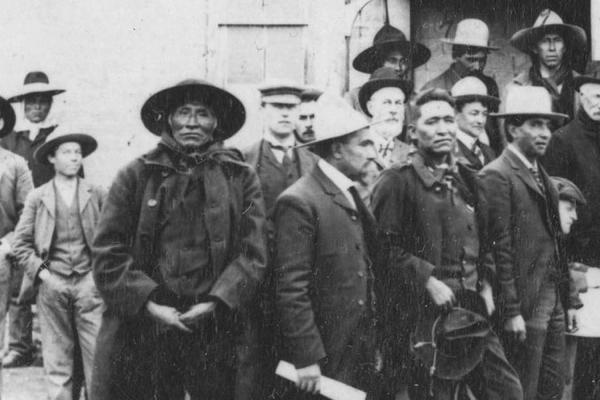
Three Photos, a Murder and a Murky Outcome: Troubled Times on Wind River
On the evening of January 11, 1907, Eastern Shoshone Tribal Councilman George Terry was murdered after leaving a council meeting. Was it a crime of passion, perhaps revenge for mistreating his wife Kate Enos? Or was it an assassination, retribution for backing the selloff of half the reservation’s tribal lands?
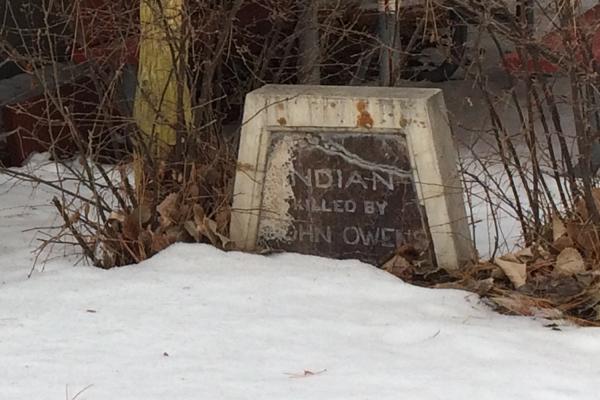
Black Kettle, Black Elk and the Wyoming State Fair
In October 1903, six Oglala Lakota Sioux and two white men died in a tragically unnecessary armed confrontation on Lightning Creek, northeast of Douglas, Wyo. But 35 years later, both sides made a public effort at a kind of reconciliation—at the Wyoming State Fair.
Holding on to Sovereignty
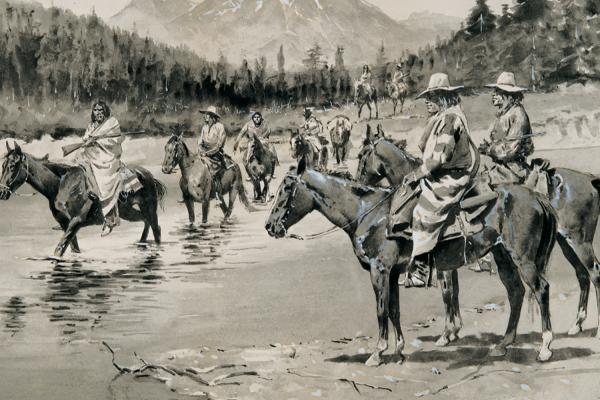
Who gets to hunt Wyoming’s elk? Tribal Hunting Rights, U.S. Law and the Bannock ‘War’ of 1895
In July 1895, a posse of non-Indians, mostly outfitters, attacked a peaceful band of Bannocks south of Jackson Hole. The Indians believed they were legally hunting elk. But in a surprise decision, the U.S. Supreme Court ruled that state law overrode their treaty rights. In 2019, in a case with huge implications for tribal sovereignty, the court finally upended that ruling. This case too was set in Wyoming, as a Crow Tribe member hunted elk in the Bighorn Mountains.
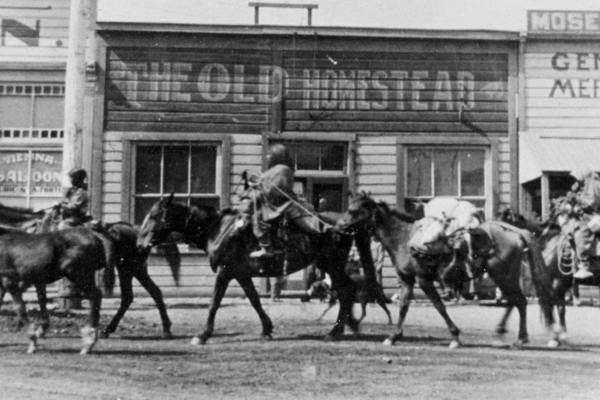
The Flight of the Utes
The talking lasted 12 hours. Several times, the Ute negotiators returned to their camp; the soldiers could do little but wait. Each time negotiations resumed, the Utes refused to return to the Utah reservation they’d left five months earlier before crossing Wyoming in the summer of 1906. Civil officials were frantic. But the Utes, disgusted with losing still more of their land to the allotment system, were positive they would not go back.
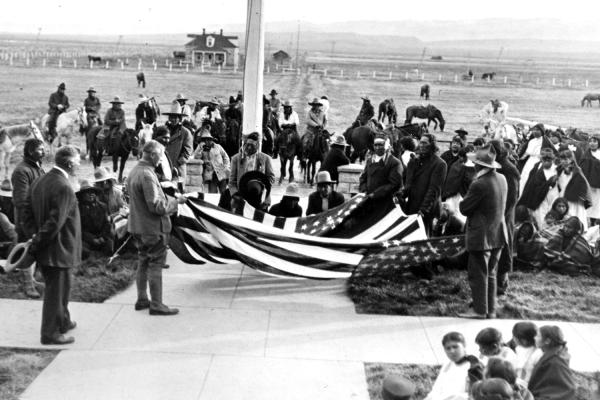
Touring the Reservations: the 1913 American Indian Citizenship Expedition
In 1913, department-store tycoon Rodman Wanamaker and photographer Joseph Dixon hatched the idea of a statue of an American Indian in New York harbor higher than the Statue of Liberty—as a memorial to what they saw as a “vanishing race.” Dixon subsequently toured and photographed 89 Indian reservations—including Wyoming’s Shoshone Reservation—leaving a valuable record.
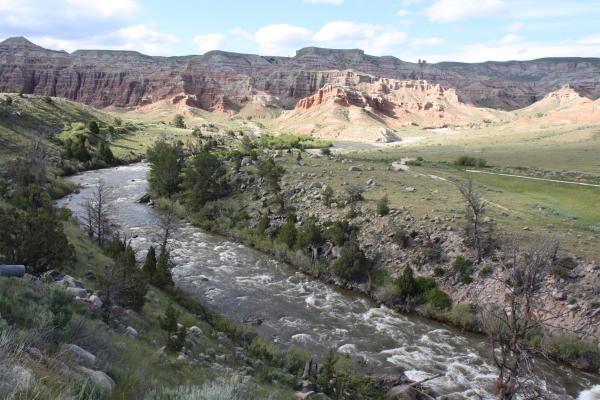
Native Rights to Wind River Water
By treaty, Native Americans in 1868 were reserved land along—and water from—Wyoming’s Wind River. But it would take a century and a half for courts to work out what water was whose—and to begin to define what tribal owners of the water could and couldn’t use their water for.
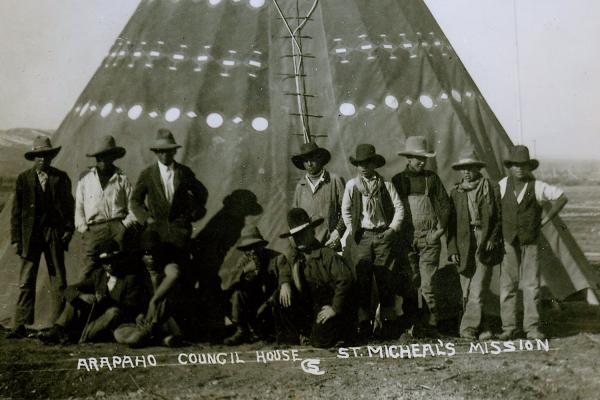
Holding on to Sovereignty: The Tribes Mix Old Forms with New
In the early decades of the 20th century, Eastern Shoshone and Northern Arapaho people in Wyoming found new ways to keep old traditions alive. At the same time they settled an old dispute by means of a long lawsuit, while always negotiating and re-negotiating their evolving relationship with the U.S. government.
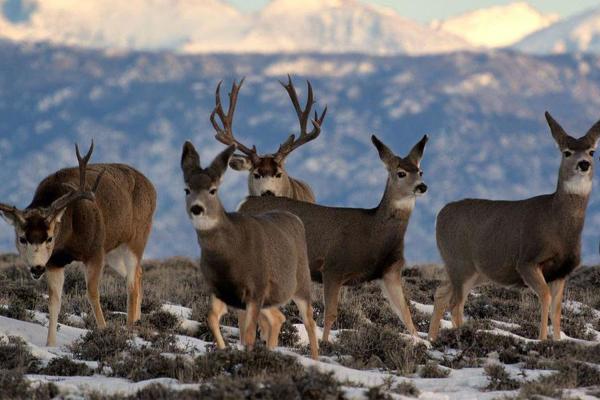
Managing Game on the Wind River Reservation
Tribal sovereignty, retained by the Eastern Shoshone and Northern Arapaho since before Wyoming statehood,governs wildlife conservation on the more than two million acres of tribal lands on the Wind River Indian Reservation. Game populations have increased steadily since a tribal game code was adopted in 1984.
Home » Listings » Wind River Indian Reservation
Wind River Indian Reservation
Fort Washakie | Rockies to Tetons
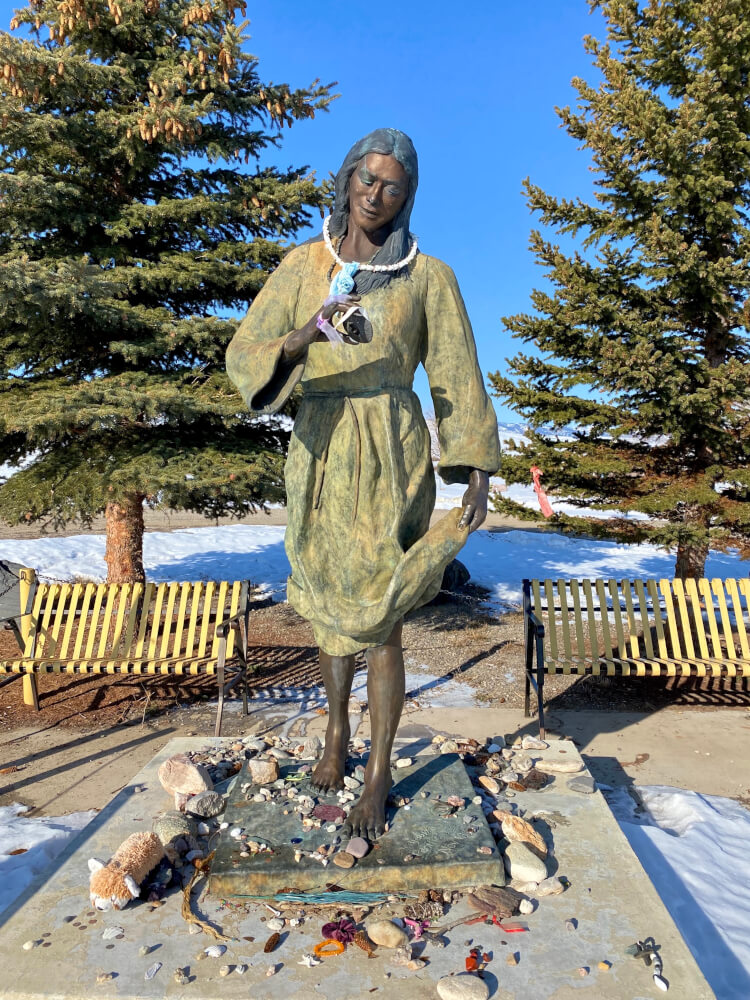
Wyoming’s Wind River Country is home to the seventh-largest Indian reservation in the country. Encompassing more than 2.2 million acres, the Wind River Indian Reservation is home to the Eastern Shoshone and the Northern Arapaho tribes. Visitors to the area can go to powwows and museums to learn more about the local culture or can recreate on thousands of acres of vast, unspoiled reservation lands (with a special permit).
Learn more about Rockies to Tetons
1st & Washakie Street
Fort Washakie, WY, 82514
(307) 332-5546
Much More to Explore
There are many ways to get out and explore all that Wyoming has to offer. Explore things to do and places to go and make your Wyoming vacation one to remember forever.
2-FOR-1 GA TICKETS WITH OUTSIDE+
Don’t miss Thundercat, Fleet Foxes, and more at the Outside Festival.
GET TICKETS
BEST WEEK EVER
Try out unlimited access with 7 days of Outside+ for free.
Start Your Free Trial
Powered by Outside
St. Stephens Mission on the Wind River Reservation
Visit an active catholic church and gift shop on the reservation..
In the mid-1800s, the U.S. Peace Policy called for religious men to teach Christianity to native tribes. Visit the still-active St. Stephens Church decorated with Native American art on the Wind River Reservation.

The History of Christian Missions on Indian Reservations
In the mid 1800’s, amid turmoil between Native Americans and encroaching white settlers, the United States Government established a “Peace Policy.” The goal of the policy was to relocate Indian tribes from their ancestral homes to land set aside for them. These land allocations are known as “reservations.” The policy also called for religious men, nominated by churches, to oversee the Indian agencies and to teach Christianity to the native tribes.
The key to the Government’s desire for Indian assimilation was by the process of education. So, in addition to having regulatory power and maintaining churches, several Christian organizations took the opportunity to setup schools within the reservations. The Jesuits founded numerous Catholic missions among the Plains Indians, including St. Stephens.
By the late 1870s, the reservation policy was regarded as a failure, primarily because it had resulted in some of the bloodiest wars between Native Americans and the United States. By the end of the 1800’s, all religious organizations had relinquished their authority to the federal Indian agency. However, the schools and churches remain.

How the St. Stephens Indian Mission and School was Founded
There are approximately 550 Indian tribes in the United States and 310 reservations. This means that like the Wind River Reservation in Wyoming, some reservations are shared. Wind River is shared by the Northern Arapaho and the Eastern Shoshone.
Chief Black Coal of the Northern Arapaho spoke of the U.S. government’s Indian Assimilation Program in 1878 saying, “This was the country of my fathers, now dead and dying. We love our children. We very much want a good school house, and a good man to teach our children to read your language, that they may grow up to be intelligent men and women, like the children of the White man. And then, when Sunday comes, we would be glad of some good man to teach our children about the Great Spirit.”
Soon after, Bishop James O’Connor, the Catholic Bishop of Omaha, heard that the Federal Government was planning a school for Indian children on the Wind River Reservation at Fort Washakie. O’Connor contacted the government and offered money to outfit the new school and arranged for a new mission to be headed by Father Jutz. However, when Jutz arrived on the reservation, he found that the Indian Agency had assigned the school to an Episcopal minister.
Undeterred, Father Jutz recognized that the school was mainly serving the Shoshone on the southwest section of the reservation, so he contacted the Arapaho in the East to see if they would be open to having their own school.
In 1884, Father Jutz sent a letter noting the construction of “a school and dwelling house” which served as chapel, sleeping quarters, kitchen, reception room, and workshop – St. Stephens Indian Mission.
Visiting St. Stephens Church, School, and Museum
St. Stephens Church is an operating Catholic church. It features beautiful Native American art and stain glass windows. The old boys dormitory and classrooms rebuilt after a fire in 1928, now serves as a post office, community center, museum, and gift shop.
For more information: St Stephens Indian Mission saintstephensmission.com (307) 856-7806> Monday-Friday 8am-4pm
Popular on Yellowstone National Park

Get a free Yellowstone trip planner with inspiring itineraries and essential information.
Healthy Living
- Clean Eating
- Vegetarian Times
- Yoga Journal
- Fly Fishing Film Tour
- National Park Trips
- Warren Miller
- Fastest Known Time
- Trail Runner
- Women's Running
- Bicycle Retailer & Industry News
- FinisherPix
- Outside Events Cycling Series
- Outside Shop
© 2024 Outside Interactive, Inc
American Indians in Wyoming
The original inhabitants of the area that is now wyoming included:, there are two federally recognized indian tribes in wyoming today., teaching and learning activities about wyoming indians:, recommended books about wyoming native americans (our organization earns a commission from any book bought through these links), other resources about american indian history, culture and society in wyoming state:, sponsored links:.
Discover the Mystique of Cheyenne Indian Reservation: Immerse Yourself in Rich Native Heritage!
The Cheyenne Indian Reservation, located in the heart of Wyoming, is a land shrouded in mystery and rich history. Stepping foot onto this sacred ground feels like entering a time capsule, where ancient traditions and modern ways of life seamlessly coexist. As you explore the reservation, you’ll be captivated by the breathtaking beauty of the vast plains, rolling hills, and majestic mountains that surround you. But beyond the picturesque landscapes, there lies a vibrant community with stories waiting to be told and experiences waiting to be discovered.
Imagine standing on the very land where battles were fought and legends were born. The Cheyenne Indian Reservation holds within its borders tales of bravery, resilience, and heritage that will leave you spellbound. From the Battle of Little Bighorn to the Trail of Tears, this land has witnessed both triumph and tragedy. It is a place where the past intertwines with the present, where ancient traditions are passed down through generations, and where the spirit of the Cheyenne people continues to thrive. Join us as we delve into this captivating world and uncover the hidden treasures that await within the Cheyenne Indian Reservation.
For many years, the Cheyenne Indian Reservation has faced numerous challenges that have had a significant impact on the community. One of these challenges is the lack of access to quality healthcare services. The reservation has limited medical facilities and resources, making it difficult for residents to receive proper medical care. This issue is exacerbated by the high poverty levels within the reservation, as many individuals cannot afford to seek healthcare outside of the reservation. Additionally, there is a lack of educational opportunities available to the residents. The limited number of schools and the low quality of education provided hinder the development and success of the younger generation. These difficulties not only affect the present well-being of the community but also limit the potential for future growth and progress.
In recent years, efforts have been made to address the challenges faced by the Cheyenne Indian Reservation. The introduction of various initiatives aimed at improving healthcare services has shown some promising results. Mobile medical clinics have been established to provide basic healthcare services to residents who can’t easily access the main medical facilities. Moreover, partnerships with external organizations have allowed for the provision of specialized medical care, such as mental health services. Additionally, educational programs have been implemented to enhance learning opportunities for the younger population. These programs focus on improving the quality of education and providing vocational training to prepare students for future employment. While there is still much work to be done, these initiatives demonstrate a step in the right direction towards improving the lives of those residing on the Cheyenne Indian Reservation.
Cheyenne Indian Reservation: A Cultural Heritage
The Cheyenne Indian Reservation, located in southeastern Montana and northeastern Wyoming, is a testament to the rich cultural heritage of the Cheyenne people. Spanning over thousands of acres, this reservation serves as a home and a sanctuary for the Cheyenne Nation, preserving their traditions, customs, and way of life. From its stunning natural landscapes to its vibrant community, the Cheyenne Indian Reservation offers a unique glimpse into the history and present-day reality of this proud Native American tribe.
Historical Significance and Origins
The Cheyenne people have a long and storied past, deeply rooted in the Great Plains region of North America. Historically, they were a nomadic tribe known for their expert horsemanship and buffalo hunting skills. The Cheyenne Indian Reservation was established in the late 19th century as part of the federal government’s efforts to consolidate various Native American tribes onto designated lands.
Despite the challenges and hardships faced during the establishment of the reservation, the Cheyenne people have managed to preserve their cultural identity and strengthen their community bonds. Today, the reservation stands as a testament to their resilience and determination to maintain their ancestral traditions.
Natural Beauty and Landscape
One of the most captivating aspects of the Cheyenne Indian Reservation is its breathtaking natural beauty. The reservation encompasses vast stretches of plains, rolling hills, and majestic mountains, offering a diverse range of ecosystems. The landscape is characterized by its wide-open spaces, where the Cheyenne people have thrived for generations.
The reservation is also home to several significant landmarks, such as Bear Butte and Devils Tower, which hold sacred importance to the Cheyenne Nation. These natural formations serve as spiritual and cultural touchstones, connecting the present-day community to their ancestral roots.
Cultural Preservation and Traditions
The Cheyenne Indian Reservation is a sanctuary for preserving and celebrating the rich cultural heritage of the Cheyenne people. The community takes great pride in passing down their traditions, language, and customs from one generation to the next. Traditional ceremonies, dances, and storytelling play a vital role in keeping their history alive.
Through the establishment of cultural centers and museums within the reservation, the Cheyenne people have created spaces where visitors can learn about their traditions and gain a deeper understanding of their way of life. These institutions serve as educational resources and platforms for cultural exchange, fostering a greater appreciation for the Cheyenne culture.
Economic Opportunities and Community Development
The Cheyenne Indian Reservation has embraced economic development initiatives to create opportunities for its residents and ensure self-sufficiency. The reservation is home to various businesses, including agriculture, tourism, and arts and crafts enterprises. These ventures not only provide employment but also allow the Cheyenne people to showcase their unique skills and talents.
Furthermore, the reservation’s natural beauty and cultural significance attract tourists from around the world, contributing to the local economy. Visitors can experience the vibrant traditions of the Cheyenne people through guided tours, cultural events, and the purchase of traditional crafts.
Challenges and Progress
While the Cheyenne Indian Reservation has made significant strides in preserving its cultural heritage and improving economic opportunities, it continues to face challenges. Limited access to quality healthcare, education, and infrastructure remains a concern for the community.
However, the Cheyenne Nation, in collaboration with government agencies and non-profit organizations, is working diligently to address these issues. Efforts are underway to improve healthcare facilities, expand educational resources, and develop sustainable infrastructure projects.
A Bright Future
The Cheyenne Indian Reservation stands as a testament to the strength and resilience of the Cheyenne people. Through their unwavering commitment to preserving their cultural heritage, the community ensures that future generations will continue to thrive and embrace their roots.
As the reservation continues to develop and grow, it remains a beacon of hope for other Native American tribes seeking to preserve their traditions and secure a prosperous future. The Cheyenne Indian Reservation serves as a living testament to the importance of cultural preservation and the power of unity within a community.
Visiting the Cheyenne Indian Reservation offers a unique opportunity to experience the rich history, natural beauty, and vibrant culture of the Cheyenne people. It is a chance to witness firsthand the indomitable spirit of a tribe that has overcome countless challenges and emerged stronger than ever.
{{section1}}
Cheyenne Indian Reservation
The Cheyenne Indian Reservation is a Native American reservation located in the state of Montana, United States. It is home to the Cheyenne people, who are part of the larger Plains Indian tribes. The reservation covers an area of approximately 444,000 acres and is situated in southeastern Montana, near the border with Wyoming.
The Cheyenne Indian Reservation was established in 1884 through a series of treaties between the United States government and the Cheyenne people. These treaties were signed to allocate land for the Cheyenne people, who had been displaced from their traditional homelands due to westward expansion and conflicts with settlers.
Today, the Cheyenne Indian Reservation is governed by the tribal council, which is responsible for making decisions regarding the reservation’s resources, land use, and community development. The reservation is divided into multiple districts, each with its own elected representative who serves on the tribal council.
The Cheyenne Indian Reservation is known for its beautiful landscapes, including rolling hills, grasslands, and the majestic Tongue River. The reservation is also rich in natural resources, such as coal, oil, and gas, which play a significant role in the local economy.
Furthermore, the Cheyenne people have a strong cultural identity and continue to practice their traditional customs and ceremonies. They have preserved their language, arts, and crafts, which are celebrated through various community events and gatherings throughout the year.
In recent years, the Cheyenne Indian Reservation has faced challenges related to poverty, unemployment, and limited access to healthcare and education. However, efforts are being made to address these issues and improve the quality of life for the Cheyenne people.
Listicle: Cheyenne Indian Reservation
- The Cheyenne Indian Reservation is located in southeastern Montana.
- It covers an area of approximately 444,000 acres.
- The reservation was established in 1884 through treaties.
- The Cheyenne people have a strong cultural identity.
- The reservation is known for its beautiful landscapes.
- Natural resources, such as coal and oil, contribute to the local economy.
- Poverty and limited access to healthcare and education are challenges faced by the reservation.
- The tribal council governs the reservation and makes decisions regarding land use and community development.
- The Cheyenne people preserve their language, arts, and crafts.
- Efforts are being made to improve the quality of life for the Cheyenne people.
The Cheyenne Indian Reservation is a place of historical and cultural significance for the Cheyenne people. It serves as a reminder of their resilience and determination to preserve their traditions and way of life. While facing challenges, the Cheyenne people continue to work towards a brighter future for themselves and future generations.
Question and Answer: Cheyenne Indian Reservation
Q1: What is the Cheyenne Indian Reservation?
A1: The Cheyenne Indian Reservation is a federally recognized reservation located in southeastern Montana, northeastern Wyoming, and western South Dakota. It is home to the Northern Cheyenne Tribe.
Q2: How large is the Cheyenne Indian Reservation?
A2: The Cheyenne Indian Reservation covers an area of approximately 444,000 acres.
Q3: What is the population of the Northern Cheyenne Tribe?
A3: As of 2020, the population of the Northern Cheyenne Tribe is estimated to be around 11,266 members.
Q4: What are some notable features of the Cheyenne Indian Reservation?
A4: The Cheyenne Indian Reservation is known for its breathtaking landscapes, including the Tongue River Canyon and the Ashland Hills. It is also rich in cultural heritage, with various ceremonial events and traditional practices celebrated by the Northern Cheyenne Tribe.
Conclusion of Cheyenne Indian Reservation
In conclusion, the Cheyenne Indian Reservation is a significant land area that serves as the home to the Northern Cheyenne Tribe. With its vast size, diverse landscapes, and vibrant cultural heritage, the reservation holds great importance for the tribe and offers visitors a unique opportunity to explore and appreciate the rich history and traditions of the Cheyenne people.
- The Cheyenne Indian Reservation is a federally recognized reservation located in southeastern Montana, northeastern Wyoming, and western South Dakota.
- The reservation covers an area of approximately 444,000 acres.
- The population of the Northern Cheyenne Tribe is estimated to be around 11,266 members.
- The reservation is known for its breathtaking landscapes and rich cultural heritage.
Thank you for taking the time to visit our blog and learn about the Cheyenne Indian Reservation. We hope that this article has provided you with valuable insights into the rich history, culture, and way of life of the Cheyenne people. As one of the oldest and most respected Native American tribes, the Cheyenne have a unique story to tell, and we are honored to share it with you.
Throughout this article, we have discussed various aspects of the Cheyenne Indian Reservation, from its location in the Great Plains to its significance as a sacred land for the Cheyenne people. We have highlighted the tribe’s traditional customs, such as their close connection to nature and their vibrant art forms. Additionally, we have shed light on the challenges faced by the Cheyenne community today, emphasizing the importance of preserving their heritage for future generations.
We hope that by reading this article, you have gained a deeper appreciation for the Cheyenne Indian Reservation and its people. We encourage you to continue exploring the rich history and cultural diversity of Native American tribes. By doing so, we can all contribute to fostering understanding, respect, and appreciation for the indigenous communities that have played a vital role in shaping our nation’s heritage.
Once again, thank you for visiting our blog. We hope that you will continue to explore and support the diverse cultures that make up our world. If you have any questions or would like to learn more about the Cheyenne Indian Reservation, please feel free to reach out to us. Safe travels and best wishes!
Leave a Reply Cancel reply
Your email address will not be published. Required fields are marked *
Save my name, email, and website in this browser for the next time I comment.

The Colorado Sun
Telling stories that matter in a dynamic, evolving state.
Six Upper Basin tribes gain permanent foothold in Colorado River discussions at key interstate commission

Share this:
- Click to share on Facebook (Opens in new window)
- Click to share on Reddit (Opens in new window)
- Click to share on X (Opens in new window)
- Click to email a link to a friend (Opens in new window)
- Original Reporting
- Subject Specialist
The Trust Project

Six tribes in the Upper Colorado River Basin, including two in Colorado, have gained long-awaited access to discussions about the basin’s water issues — talks that were formerly limited to states and the federal government
Under an agreement finalized this month, the tribes will meet every two months to discuss Colorado River issues with an interstate water policy commission, the Upper Colorado River Commission, or UCRC. It’s the first time in the commission’s 76-year history that tribes have been formally included, and the timing is key as negotiations about the river’s future intensify.
“The tribes’ participation in the UCRC really didn’t start until a couple of years ago,” said Peter Ortego, general counsel for the Ute Mountain Ute Indian Tribe. “But Ute Mountain has always been in favor of having a robust tribal role in the UCRC, so we were glad to see the (agreement) come about.”
The Upper Colorado River Commission, established in 1948 by Congress, has permanent seats for a federal representative and commissioners for the four Upper Basin states — Colorado, New Mexico, Utah and Wyoming.

This Fresh Water News story is a collaboration between The Colorado Sun and Water Education Colorado. It also appears at wateredco.org/fresh-water-news .
In recent years, Upper Colorado River commissioners’ discussions have focused on key issues, like how to spend federal dollars and respond to a prolonged drought that is threatening the future water security of 40 million people across the West.
The commission has also become a key forum for sharing updates on the negotiations that will decide how the basin’s water storage reservoirs will be managed after the current rules expire in 2026. The four state commissioners are also the top negotiators for each Upper Basin state.
The six Upper Basin tribes have long asked for a seat at that table and in other forums where Colorado River decisions are made.
The 30 federally recognized tribes, including the six in the Upper Basin, have rights to about 26% of the river’s average flow. A century ago, state and federal leaders did not include tribes in foundational water-sharing agreements despite federal recognition of tribal water rights in years prior. As recently as 2007 and 2019, state and federal partners developed new rules for managing the river in response to prolonged drought, but again, tribes were not included .
The new agreement, signed by tribal officials April 22, aims to correct that exclusion.
Both federally recognized tribes with reservation land in Colorado, the Southern Ute Indian Tribe and the Ute Mountain Ute Indian Tribe, joined the agreement . The agreement also includes the Jicarilla Apache Nation, the Navajo Nation, the Ute Indian Tribe and the Paiute Indian Tribe of Utah. The commission approved the agreement in early March .
The river commission has no authority in the Lower Basin, which includes Arizona, California, Nevada and more than 20 tribal nations, and does not have a similar, centralized commission.
The six Upper Basin tribes and commissioners have been meeting regularly since August 2022. Under the agreement, those meetings will continue permanently, giving tribes a long-awaited voice in the discussions but no vote in the commission’s decisions. That change would require Congressional approval.
“We have safeguarded these lands and waters since before there was a state, and our responsibility continues to this day,” Southern Ute Indian Tribe vice chair Lorelei Cloud said in a prepared statement. The memorandum of understanding, she wrote, “stands as a powerful symbol of our enduring connection to this sacred resource.”
What’s next for the tribal discussions?
The first meeting under the new agreement took place April 23, according to the river commission.
Through the joint meetings, officials plan to prioritize calculating water losses in the Lower Basin, continuing water conservation programs, helping tribes participate in Colorado River decision-making, and ensuring that the Upper Basin will be able to protect water levels in Lake Powell, the massive reservoir on the Utah-Arizona border, according to a 2022 commission plan.
Most immediately, the commission wants a key number: How much water goes unused by tribes and flows down to the Lower Basin?
The six Upper Basin tribes have settled legal rights to use about 1.1 million acre-feet of water per year, according to 2021 Water and Tribes Initiative analysis . One acre-foot roughly equals the annual water use of two to three households.
The analysis estimated that Upper Basin tribes might only be using 37% of their allowed water. Some rights are still unresolved, caught up in legal cases or settlement negotiations. Several tribes have quantified water rights but lack the infrastructure to deliver it to homes, businesses and farms.
“It’s fair to say a portion of the water that is flowing downstream to the Lower Basin, and being relied upon in the Lower Basin, is settled but unused tribal water from the Upper Basin tribes,” said Chuck Cullom, executive director of the Upper Colorado River Commission.
Another top priority: determining whether tribes can participate in paid conservation programs.
Lower Basin water users can be paid to let water, which comes from the Upper Basin, flow past their lands as part of conservation programs, according to Upper Basin officials. Tribes, however, aren’t compensated for their unused water from settled water rights.
☀️ READ MORE
Colorado voters may be asked to send more sports betting money to water projects, colorado communities are working to protect their water from wildfires, before the fire happens, thornton again asks larimer county to approve crucial water pipeline needed to grow the city.
This is a key issue for Ortego. Both tribes in Colorado have rights to water they currently can’t access in Lake Nighthorse Reservoir near Durango. He wants to know if the Ute Mountain Ute Indian Tribe can be compensated for letting that water pass its lands through programs like the system conservation pilot program .
He also wants to see officials broach ways to give tribes more legal flexibility to use their water in different ways and to fund tribal water infrastructure projects. When it comes to including tribes in Colorado River discussions, officials are just starting to figure it out, he said.
“The tribes don’t necessarily know what the solution is, and neither does everybody else,” Ortego said. “We’re all trying to figure out the best way to incorporate tribes. I really appreciate the effort of the UCRC in doing that.”
Type of Story: News
Based on facts, either observed and verified directly by the reporter, or reported and verified from knowledgeable sources.
Shannon Mullane Colorado River Reporter
Shannon Mullane writes about the Colorado River Basin and Western water issues for The Colorado Sun. She frequently covers water news related to Western tribes, Western Slope and Colorado with an eye on issues related to resource management,... More by Shannon Mullane
The Federal Register
The daily journal of the united states government, request access.
Due to aggressive automated scraping of FederalRegister.gov and eCFR.gov, programmatic access to these sites is limited to access to our extensive developer APIs.
If you are human user receiving this message, we can add your IP address to a set of IPs that can access FederalRegister.gov & eCFR.gov; complete the CAPTCHA (bot test) below and click "Request Access". This process will be necessary for each IP address you wish to access the site from, requests are valid for approximately one quarter (three months) after which the process may need to be repeated.
An official website of the United States government.
If you want to request a wider IP range, first request access for your current IP, and then use the "Site Feedback" button found in the lower left-hand side to make the request.

IMAGES
VIDEO
COMMENTS
2. Havasupai Indian Reservation, Arizona. Havasupai Indian Reservation, Arizona is a popular tourist spot in the United States. It's known for its red rock walls and clear blue waters; however, it's incredibly sacred to its people. You can't hike or camp at the reservation without reservations with the tribe.
Wyoming's Wind River Country is home to the seventh largest Indian reservation in the country. Encompassing more than 2.2 million acres, the Wind River Indian Reservation is home to the Eastern Shoshone and the Northern Arapaho tribes. Visitors to the area can go to powwows and museums to learn more about the local culture, or can recreate on ...
You can see the Sitting Bull monument off of highway 1806 in Mobridge. www.mobridge.org. ... Wind River Indian Reservation, Wyoming. Encompassing more than 2 million acres, Wyoming's Wind River is the seventh largest Native American reservation in the United States. Many tourists visit Wind River to witness the Absaroka Mountains, Boysen ...
Northern Arapaho Experience Culture Room. Located inside the Wind River Hotel & Casino, the Northern Arapaho Experience Culture Room offers visitors the chance to see the past, present and future of the Northern Arapaho. They also offer tours, language lessons and storytelling. 5. Hines General Store.
Legend Rock Petroglyph Historic Site. Located 29 miles north of Thermopolis is a 1,312-foot long, near-vertical cliff with over 92 petroglyphs. Legend Rock has been a sacred Native American site for thousands of years. It includes a visitors' center (summer months only), interpretative trails and a picnic shelter.
Located in Wyoming's Wind River Basin in the "Valley of the Warm Winds," the Wind River Indian Reservation encompasses more than 2.2 million acres and is home to thousands of members of the Eastern Shoshone and Northern Arapaho tribes. Within the Reservation's boundaries are the communities of the Arapaho, Crowheart, Ethete and Fort ...
Nestled in Wyoming's Wind River Country is the seventh largest Indian reservation in the country. Encompassing more than 2.2 million acres, the Wind River Indian Reservation is home to the Eastern Shoshone and the Northern Arapaho tribes. Visitors to the area can go to powwows and museums to learn about local culture, or can recreate on ...
Wind River Indian Reservation. The 1.7+ million-acre Reservation is home to the Eastern Shoshone and Northern Arapaho tribes and was established in 1868 through the Bridger-Teton Treaty with the U.S. government. The Eastern Shoshone moved to what they call the "Warm Valley" from the Great Basin area and the Arapaho are originally from Colorado.
The Wind River Indian Reservation is the seventh-largest American Indian reservation in the United States by area and the fifth-largest [6] by population. The land area is approximately 2.2 million acres (3,438 sq mi; 8,903 km 2 ), and the total area (land and water) is 3,532.01 square miles (9,147.9 km 2 ).
The Wind River Indian Reservation is the primary site of most of John Roberts's life and ministry. The reservation communities of Fort Washakie and Ethete are central to the story. Trout Creek Road, Fremont County 252, which turns southwest off US 287 at Fort Washakie, is the turnoff for the Roberts Mission and Sacagawea Cemetery. It is the continuation of the road from Ethete after it ...
The city of Riverton is surrounded by Wyoming's only reservation, the Wind River Reservation. It is the seventh largest reservation in the country. With 2.2 million acres, the reservation encompasses several communities - like Fort Washakie, Ethete, St. Stephens, and Arapahoe - as well as sunshine-touched landscapes, important cultural ...
The Wind River Reservation is located in southwestern Wyoming near Lander, Wyoming. This scenic and mountainous reservation is home to over 3,900 Eastern Shoshone and 8,600 Northern Arapaho enrolled tribal members. The Wind River Agency provides stewardship to more than 1,987,994 surface acres in trust.
Introduction Like many western states, Wyoming has an Indian reservation within its borders. The Wind River Indian Reservation contains over 2.2 million acres located in the central part of the state. It is home for the Eastern Shoshone and Northern Arapaho tribes. While the Arapahos have more members (over 9,000+ compared to the Shoshones' 4000+ […]
The Wind River Indian Reservation, which is in the Valley of Warm Winds, is home to two Native American tribes - the Eastern Shoshone and the Northern Arapaho. Experience the stories and traditions through powwows, music, museums, cultural centers, historic sites, ancient petroglyphs and tours. Powwows and weekly dance performances take place ...
Tribal sovereignty, retained by the Eastern Shoshone and Northern Arapaho since before Wyoming statehood,governs wildlife conservation on the more than two million acres of tribal lands on the Wind River Indian Reservation. Game populations have increased steadily since a tribal game code was adopted in 1984.
Wyoming's Wind River Country is home to the seventh-largest Indian reservation in the country. Encompassing more than 2.2 million acres, the Wind River Indian Reservation is home to the Eastern Shoshone and the Northern Arapaho tribes. Visitors to the area can go to powwows and museums to learn more about the local culture or can recreate on ...
For more information: St Stephens Indian Mission. saintstephensmission.com. (307) 856-7806>. Monday-Friday 8am-4pm. High five 0. In the mid-1800s the U.S. Peace Policy called for religious men to teach Christianity to native tribes. Visit the still-active St. Stephens Indian Misson.
Get Inspired. Wyoming's best adventure starts in Wind River Country. Come to get away from the crowds: unplug, unwind and meet Wyoming in the way it's meant to be met. Come see what's waiting for you in Wind River Country. We ask you to please travel responsibly. Get the latest information. Start Planning. Bighorn sheep rut on Whiskey ...
There are two federally recognized Indian tribes in Wyoming today. Wyoming's Shoshone and Arapaho tribes share a single Indian reservation: Wind River Reservation: PO Box 217 Fort Washakie, WY 82514 ... In-depth history of the Eastern Shoshone Indians of Wyoming. What You See in Clear Water: Interesting book about tensions between Arapahos, ...
The Cheyenne Indian Reservation, located in the heart of Wyoming, is a land shrouded in mystery and rich history. ... Thank you for taking the time to visit our blog and learn about the Cheyenne Indian Reservation. We hope that this article has provided you with valuable insights into the rich history, culture, and way of life of the Cheyenne ...
9 See also. 10 References. 11 Sources. Toggle the table of contents. ... Wind River Reservation: Wyoming: 26,490: 3,474.82 (8,999.75) 57.79 (149.68) 3,532.61 (9,149.43) yes Winnebago Reservation: Iowa, Nebraska: ... A state designated American Indian reservation is the land area designated by a state for state-recognized American Indian tribes ...
Yellowstone National Park. Embark on a cultural journey by exploring museums, festivals, powwows, and learning about the Shoshone and Arapaho Tribes' history and traditions.
He wants to know if the Ute Mountain Ute Indian Tribe can be compensated for letting that water pass its lands through programs like the system conservation pilot program. He also wants to see officials broach ways to give tribes more legal flexibility to use their water in different ways and to fund tribal water infrastructure projects.
On April 25, the Office of Indian Energy hosted the second webinar of the 2024 Tribal Energy Webinar Series. View the webinar recording and slides to learn about the Viejas Microgrid and Yakama Power, two Tribal energy projects that are breaking ground with novel financing opportunities: the Tribal Energy Financing Program and the Buy Indian Act.. Also, get the latest updates and application ...
Part 1229 governs delegations to a State to conduct audits and related investigations for Federal lands within the State, and for Indian lands for which the State has received permission from the respective Indian Tribes or allottees to carry out audit activities delegated to the State under 30 U.S.C. 1735.
From the Southwest. To reach Wyoming's Wind River Country from the southwest, you will likely start on Interstate 80 going east. You will need to look for the Highway 372 exit a few miles east of Little America. Turning north on Highway 372 will lead you along the west side of the Green River. The highway is on the tableland above the river ...